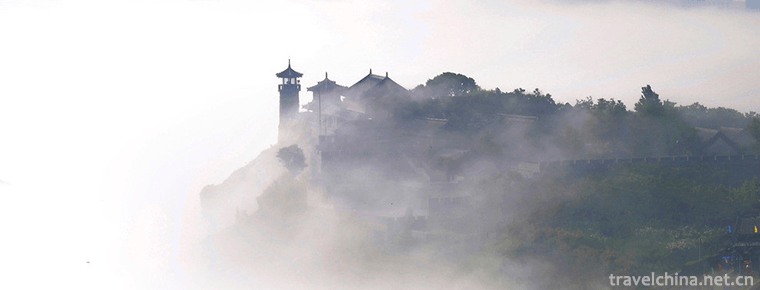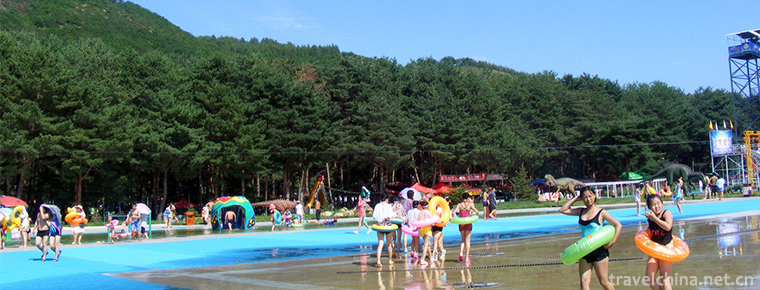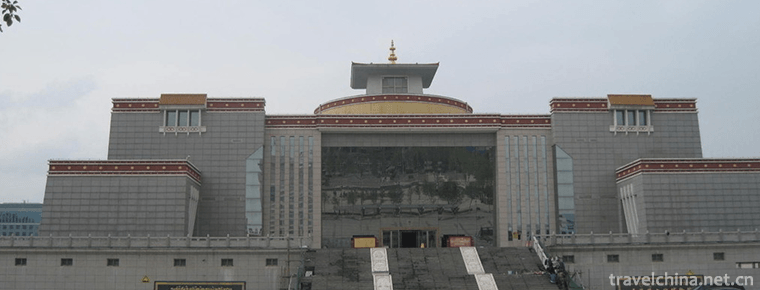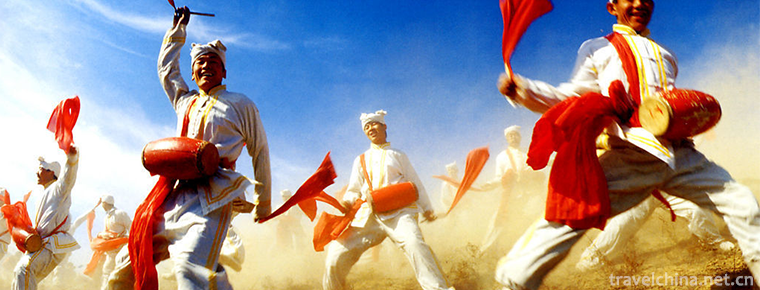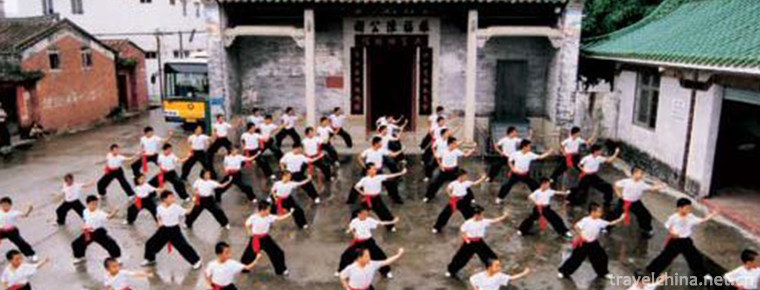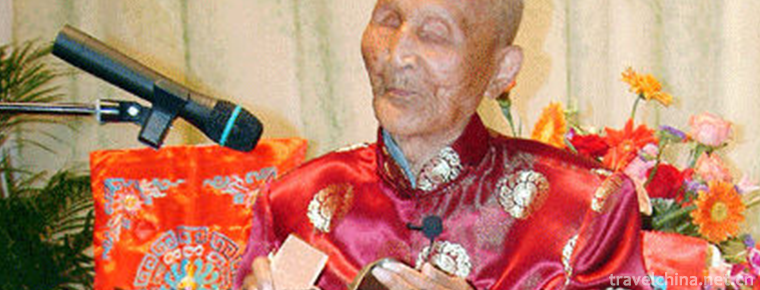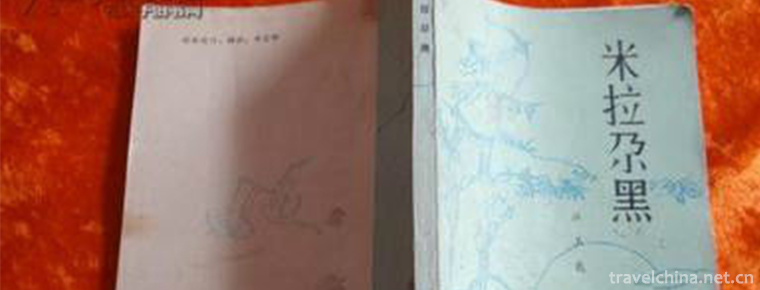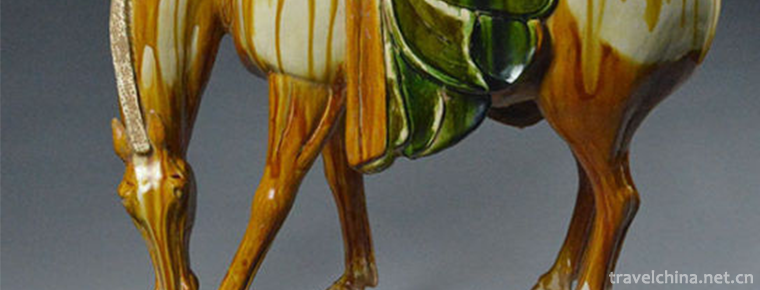Gong and Drum Art
Gong and Drum Art
Gong and drum art can be roughly divided into Yunsheng Gong and drum, Zhongzhou big drum, Ezhou brand gong, Xiaohe Gong and drum, Hanggu flying gong, Changshan battle drum, Taiyuan Gong and drum, Lijing ten bronze Gong and drum, big bronze ware, Kaifeng pangu, Yichangtang tune, Hancheng hang drum.
In 2008, it was approved by the State Council to be included in the second batch of national intangible cultural heritage list.
historical origin
Taiyuan gongs and drums are evolved and inherited from the "social drums" with a long history. They are popular in Taiyuan and parts of Jinzhong and Lvliang. Its rhythm can be traced back to the pre-Qin period, and the earliest structure can be traced back to the Ningzong period of the Song Dynasty (1195 A.D.).
Yunsheng Gong and drum, originally known as Gong and drum, is a traditional drum music in Datong City, Shanxi Province. Originated in the area of Shengkou, 40 kilometers north of Datong. During the Spring and Autumn Period and the Warring States Period, King Zhao Wuling led the army to fight against the Huns. During the Spring and Autumn Period and the Warring States Period, King Zhao Wuling used force to expand his territory and attack Lin Hu and Lou Fan. Before each expedition, he played gongs and drums to inspire people; when fighting in the battlefield, he also played gongs and drums to inspire morale; after winning the DPRK, he also played gongs and drums to celebrate his achievements. Later, Yunsheng gongs and drums were also used in wars of successive dynasties, such as the Expedition of Huns in the Han Dynasty, the Northern Wei Dynasty, the attack of Turks in the Sui and Tang Dynasties, the resistance of Liao and Jin Dynasties in the Northern Song Dynasty, and the arrival of Mongolia in the Ming Dynasty. During the prosperous period of Kang and Qian in the Qing Dynasty, the national unity, social stability, economic prosperity and the gradual development of Yunsheng gongs and drums had been widely used in festivals, business booms, harvest after autumn, and Fe 。
artistic characteristics
Taiyuan Gong and drum
The biggest characteristic of Taiyuan Gong and drum is that the two teams set up their positions and confront each other. This kind of confrontation often occurs on festive days and the two teams meet on the streets. Every time this happens, the two sides will not compromise with each other. They will show their skills, one song after another, one after another, one after another, eager for a while, and never stop fighting for high mountains and low rivers. This kind of recital performance, the more vigorous, the more exciting, sometimes playing for five or six hours and refused to stop.
This kind of confrontation and contest has become a traditional custom of Taiyuan gongs and drums, just like the two armies fighting each other, vowing to win or lose. Its skillful performance skills and intense scenes are rare in China. It reflects the rugged local characteristics of Taiyuan people since ancient times, and also reflects the national characteristics of Taiyuan people's perseverance, yearning for victory and pursuit. It constitutes the strong local characteristics of Taiyuan gongs and drums, and also establishes the dominant position of Taiyuan gongs and drums in the traditional folk custom of Taiyuan.
Taiyuan gongs and drums are the soul of Taiyuan's social fire custom, which is enjoyed by Taiyuan people. After the liberation of Taiyuan, especially since the reform and opening up, this kind of folk society fire activity, which has been inherited for a long time, has entered its golden age. At the opening ceremony of the First Chinese Folk Art Festival and the Eleventh Asian Games, it has made a great show of its skills, spread widely throughout the country, and is known as "the first drum of China".
Yun Sheng Gong and drum
Yunsheng Gong and drum is a percussion ensemble which is deeply popular with the audience. It is not only different from gongs and drums in southern Shanxi, but also different from gongs and drums in Taiyuan. It plays with characters, plots and story content, and it can be a major school of its own in Shanxi gongs and drums. Its playing team can be large or small, with more than 10 minors and about 100 adults. The instruments are big drums on one or three sides, gongs on all sides, scratches on four sides and Qin on four sides. During the performance, the formation changes from time to time, the team sometimes looks like a dragon, sometimes like a tiger, not only the sound is shocking, pleasant, but also changeable and diverse, which is very spectacular. The music of Gong and drum includes "point will go out", "fight four doors", "win back the dynasty", "celebration of all the people" and "Yangge across the street". The performers wear colored clothes and beat gongs and drums with their hands. Through such difficult performing techniques as "snatching golden melons", "golden dragon playing water", "wind and waves", "ringing bells at night", and "two Dragons out of water", "eight-character fan surface", "one word long snake" and "one word long snake". "Danfeng Chaoyang" and other teams change and change, fully reflecting the four major artistic characteristics of Yunsheng Gong and drum: rush like waves, slow as a trickle of water, heavy like thunder and lighter than the night bell. In performance, drums and gongs shocked the whole world with mellow timbre, which made people feel that the drums were rigid and soft, the rhythm was cheerful, the weight was ranked and the level was distinct. When the gongs and drums were loud, they were like storms and waves, and when they were slow, they were like streams and streams, giving people a pleasant artistic enjoyment. It fully reflects the local characteristics of the people of the Saisheng Plateau, which are warm and bold, vigorous, hardworking and brave, and striving to be strong.
Changshan war drum
"Changshan Battle Drum" is a folk Qinggong and drum composed of drums, cymbals, cymbals, gongs and other percussion instruments. Its music cards are mostly composed of several gongs and drums that can be played independently. It is a set music structure. It is mainly used for square performances and has been well received.
Classic tracks
The classical repertoires of Yunsheng gongs and drums include Mu Guiying's Great Breaking the Sky Gate Array, Eight Immortals Crossing the Sea and Tigers Down the Mountain.
Changshan battle drum routines are various and have many brands. The main music cards are "Mo Er San", "Xiao Xigu", "Da Xigu", "Stepping Forward", "Monkey Climbing Pole" and 12 others.

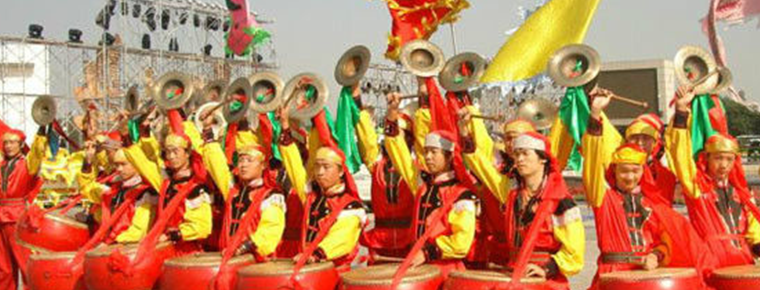
-
Penglaige tourist area
Penglaige Scenic Area, located in Danya Mountain, northwest of Penglai City, Shandong Province, is a national AAAAA-level tourist attraction with an area of 18,500 square meters.
Views: 105 Time 2018-12-08 -
Sanhe ancient town Scenic Area
Sanhe Ancient Town Scenic Area is located in Feixi County, Hefei City, on the shore of Chaohu Lake, adjacent to Lujiang County and Shucheng County.
Views: 143 Time 2018-12-08 -
Shangganling Xishui National Forest Park
Shangganling Xishui National Forest Park combines the strong local flavor and exotic style with the elegance of "paradise". It has both unique natural landscape and distinctive humanistic la.
Views: 383 Time 2018-12-19 -
Yilong Water Custom Park
Yilong Water Custom Park was built in 1996, covering an area of 100 hectares. It was solely operated by individuals and formally opened in June 1997..
Views: 360 Time 2018-12-22 -
Qinghai Tibetan Medicine Culture Museum
Qinghai Tibetan Medicine and Culture Museum was built in 2006, with a total construction area of 12,000 square meters. It is the only comprehensive museum reflecting.
Views: 177 Time 2019-02-07 -
Ansai waist drum
Ansai waist drum is a traditional folk dance in Shaanxi Province. Performances can be performed by several people or thousands of people together, magnificent momentum, exquisite performance is intoxi.
Views: 229 Time 2019-03-31 -
Cai Lifo quan
Cai Li Foquan is one of the Nanquan in Chinese traditional boxing. Legend has it that Chen Heng (1806-1875), a native of Jingmei Township, the new capital of Guangdong Province,.
Views: 178 Time 2019-04-04 -
Sing the news
Singing news is a traditional local opera popular in eastern Zhejiang, especially in Fenghua, Beilun, Zhenhai, Yinzhou and Xiangshan. Singing news has a long history, about a hundred years ago.
Views: 200 Time 2019-04-16 -
Mira Gahei Mile La Ga Hei
Mira Gahei, Dongxiang folk tale. Also known as "Moonlight Mirror". Among the Dongxiang people, there are also poem-style stories of "Mira'er Hei", which are intermingled in rhyme a.
Views: 104 Time 2019-06-04 -
Tang Sancai Techniques
Tang tri coloured firing technique originated from the early Tang Dynasty. The tri coloured glazed pottery of Tang Dynasty, as the essence of traditional Chinese art in the Tang Dynasty, has a history.
Views: 121 Time 2019-06-18 -
Rongxian Gaoshiti Forest Park
The landform of Gaoshiti Forest Park is peculiar, with boulders, odd peaks, valleys and streams forming a typical natural landscape of low mountain landform in southern Sichuan. Gaoshiti Forest Park covers a total area of 182.13 hectares. It was approved as a provincial forest park by the provincial forestry department in 1993..
Views: 170 Time 2020-10-15 -
Tiantai Mountain in Qionglai
Tiantai Mountain Scenic Area in Qionglai is located in the southwest of Qionglai City, the hometown of Wenjun. It is the habitat of Sichuan Giant Panda. It is 110 km away from Chengdu City and 45 km away from Qionglai. .
Views: 193 Time 2020-11-05
